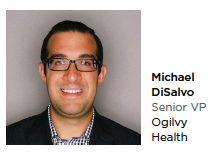 Captaining a pharma product launch can be career-defining. The course is uncharted, the excitement tangible, and visibility is high. Beyond product launches, managing a brand’s early lifecycle can be reinvigorating, with additional indications, long-term clinical programs, and new commercial offerings.
Captaining a pharma product launch can be career-defining. The course is uncharted, the excitement tangible, and visibility is high. Beyond product launches, managing a brand’s early lifecycle can be reinvigorating, with additional indications, long-term clinical programs, and new commercial offerings.
However, more mature products approaching loss of exclusivity (LOE) lack the glamour associated with brands early in their lifecycles. In reality, the years leading up to pre-LOE and immediately preceding LOE (peri-LOE) provide opportunities for innovative approaches to accelerate success. We’ve compiled areas to explore to make the most of a pre- or peri-LOE brand.
Start Early
Early on, all efforts should be made to explore clinical and regulatory strategies to extend a product’s patent. These can include additional indications/formulations, pediatric exclusivity, over-the counter (OTC) switch, or combination drugs. The best LOE strategy is a full lifecycle-management plan capturing clinical and regulatory milestones from approval to expiration.
After exhausting options to extend that lifecycle, commercial levers can optimize the period of exclusivity. Pre-LOE effort should aim to: maximize value before patent expiration and mitigate erosion after expiration.
Early Detection Systems
A brand’s success post-LOE is influenced by initial generic entry. Building robust competitive intelligence systems is paramount. Look to centralize competitive monitoring at a regional or global level. Keep a close line to those who manage intellectual property and patent challenges from a legal perspective. They often are the first aware of generics’ intent to launch.
Refocus Commercial Activities
As patent expiration approaches, reassess commercial strategies to ensure they can demonstrate value before LOE. This may mean shifting from long-term strategies to strategies with demonstrable return on investment (ROI) within the next two years. Mature products have inspired a number of innovations such as at-home delivery, online pharmacy, telemedicine platforms, and portfolio approaches to sales. Recently, digital health companies have breathed new life into generic prescription treatments for erectile dysfunction, smoking cessation, and hair loss.
Review Sales Approach as an Organization, Not a Brand
Some of the biggest pre-LOE decisions relate to a brand’s selling strategy and strength/size of its sales force. Strategy reviews should occur regularly, but especially in the last five years of exclusivity. The relationships a company builds with individual healthcare providers (HCPs), key accounts, and health systems are priceless. Sales can also be looked at from a portfolio perspective, understanding how these relationships and their patients are serviced by other products. Organizations may consider shifting from a dedicated field force to a portfolio selling strategy to ensure continuity for these HCPs.
With a portfolio strategy, however, a mature product may lose priority with reps, particularly if there is a lack of new data. Depending on the category, some brands may want to double down on high-yield prescribers who can reach the largest pool of appropriate patients, rather than spending time to evangelize new prescribers.
Be Clear on Patient Impact
Price is not the only driver of patient treatment preference post-LOE. While pricing strategies and scenarios that react to generic entry are critical, it is equally important to pilot efforts that build patient loyalty, particularly for chronic treatments where patients want to maintain their outcomes.
Pilots may include friendlier routes of administration, differentiating packaging, educational resources, or digital support programs. For example, a blister pack for oral treatments can contribute to adherence and may encourage a physician to prescribe a brand when generic competitors only provide bottle executions.
Think Beyond Revenue
While maximizing revenue is impressive, understanding and evaluating a cost of goods reduction initiative can make a difference in the final years of exclusivity. Evaluating packaging to align with generics, centralizing production for multiple markets, or examining the product offering can drastically offset the impact of decreased revenue.
Manage Knowledge Transfer
Due to a high rate of turnover associated with mature products, creating a repository for knowledge transfer can ease onboarding of new team members.
As LOE approaches, maintaining a brand’s history becomes critically important, especially if the asset will transition to another part of the organization or be out licensed to an entity more familiar with managing post-LOE products. Loss of exclusivity may not be as flashy as a direct-to-consumer campaign or as highly touted as the readout of a decade-long clinical study. However, a smart execution can show your savviness as a marketer who can make something truly great out of a challenging situation.(PV)
Ogilvy Health keeps our audiences’ health, healthcare, and wellness needs at the center of every touchpoint.
For more information, visit ogilvyhealth.com.


















